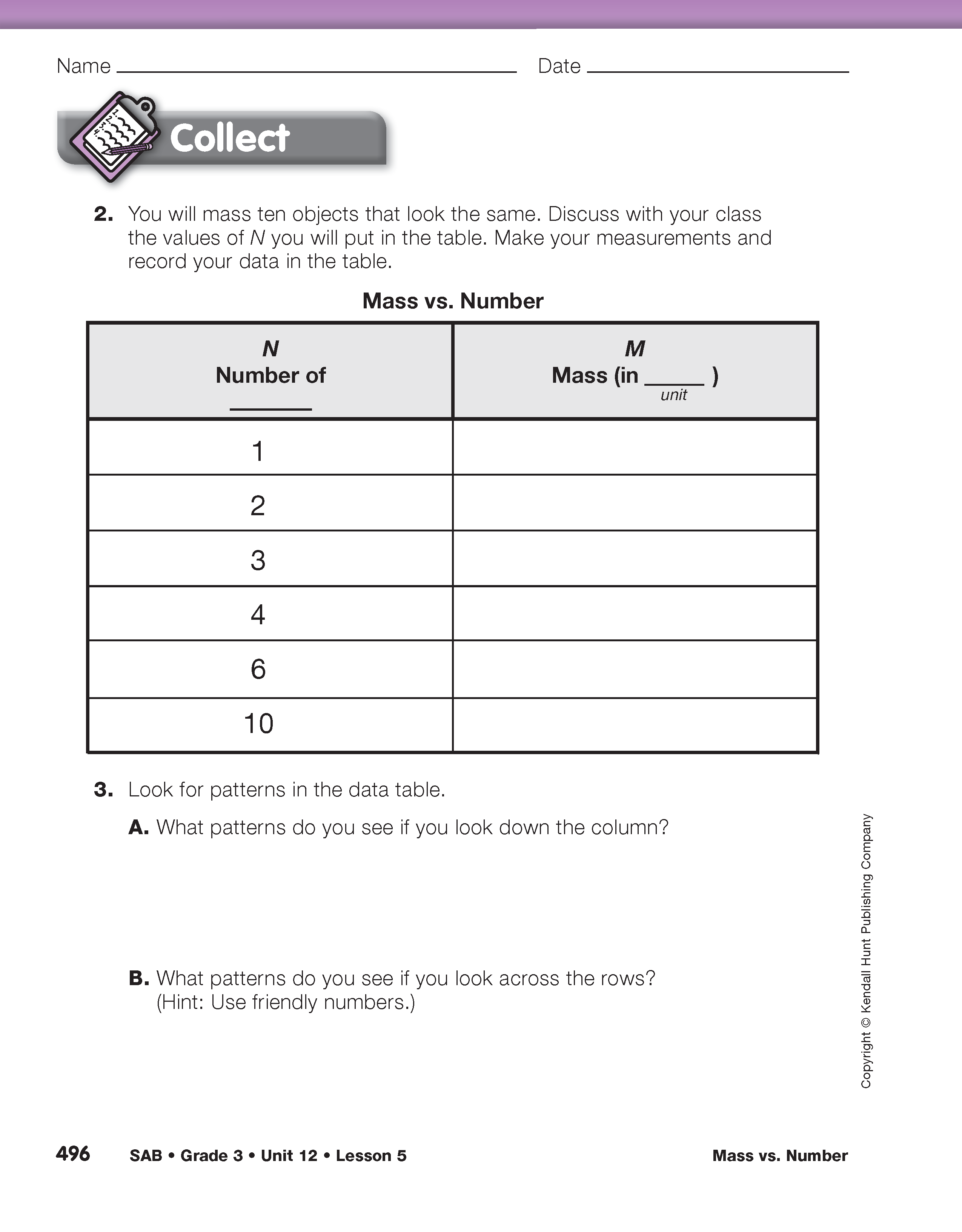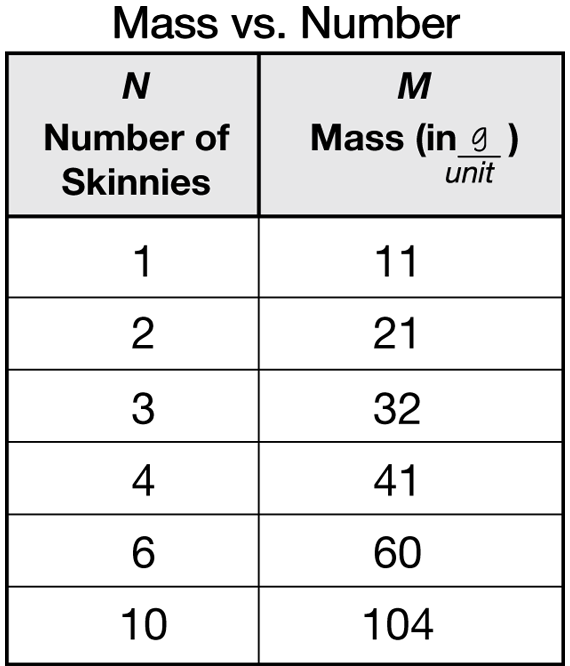Mass vs. Number
Est. Class Sessions: 3–4Developing the Lesson
Part 3. Collecting the Data
The Number of Objects (N) is already recorded in the left column because those values are known before collecting the data, and the total Mass (M) will go in the right column because those are the values students will find as a result of the data collection.
Before students turn to the Collect section of the Investigating Mass and Number pages, ask:
Remind them that it will help them to know what happens when the number of objects is doubled or tripled. A good set of numbers to select for N, therefore, would be 1, 2, 3, 4, and 6. This gives three sets of doubles (1:2, 2:4, 3:6) and two sets of triples (1:3, 2:6). Since the numbers 5 and 7 are left out, students can make and check predictions for these numbers later.
Ten is also a good number to include because it is an easy number from which to reason. Direct students' attention to the data table in Check-In: Question 2. Distribute materials to student groups and assign Questions 2–5. As students are measuring and collecting data, observe their procedures and record your observations in the Feedback Box.
Students now begin making their measurements and recording the data in their data tables. Once the data has been collected, they look at their tables to see if there are any patterns (Questions 3–5). For example, Figure 3 contains some data from a group of students who did the investigation using plastic skinnies. The mass approximately doubles when the number of objects doubles from one to two (from 11 g to 21 g), from two to four (from 21 g to 41 g), and from three to six (from 32 g to 60 g). If students look across the rows, they will see that the mass of the objects is about 10 times the number of objects.














